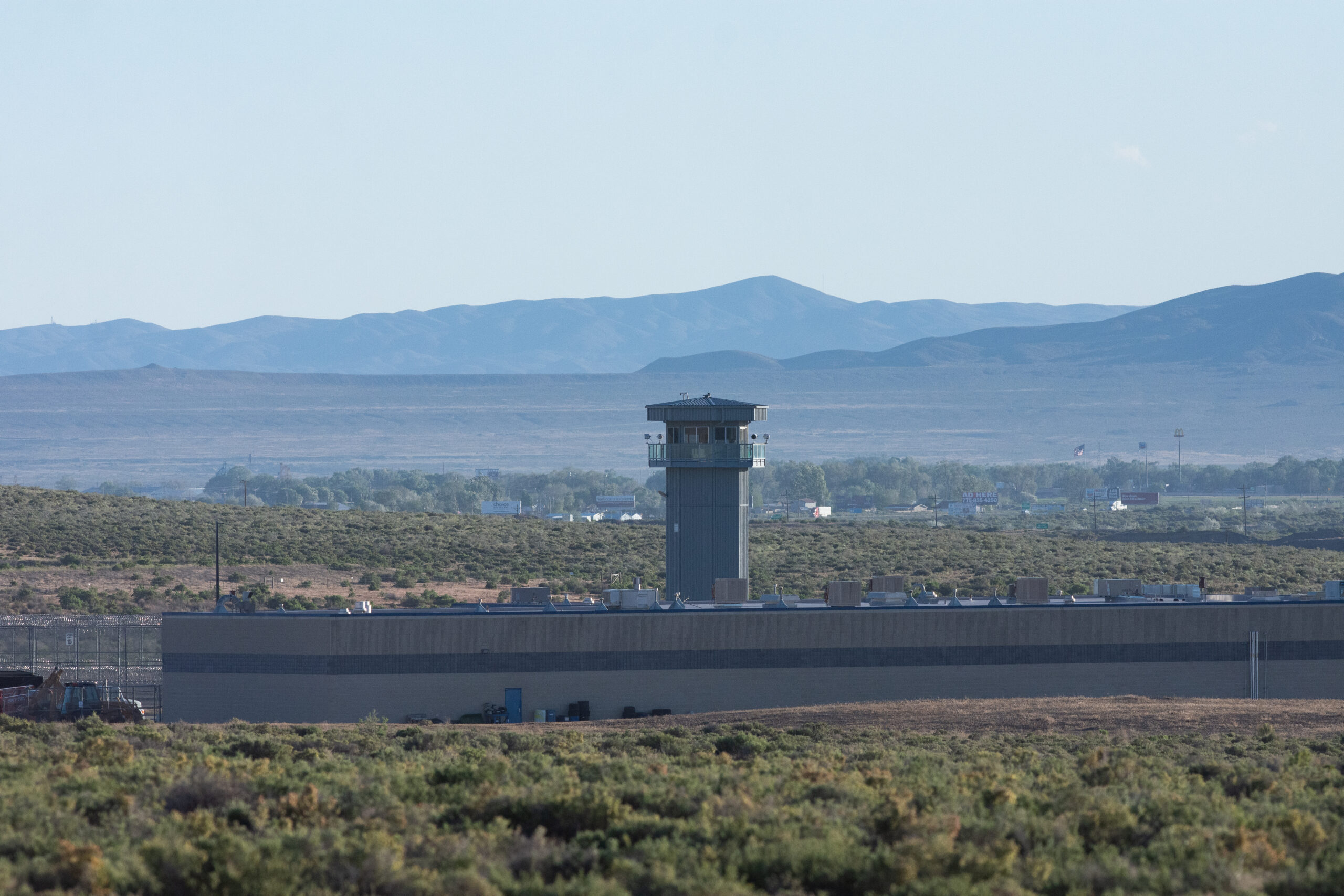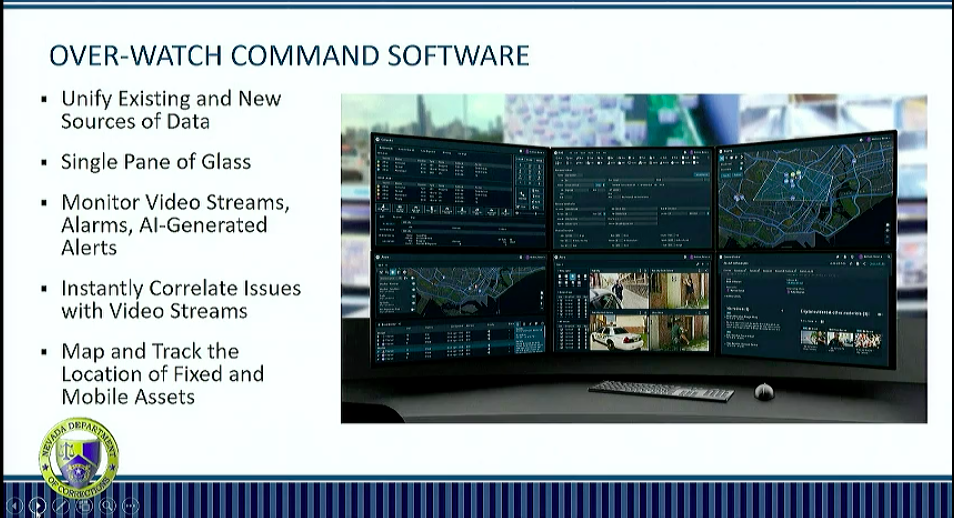As prison staff vacancy rate soars, officials propose surveillance wristbands, drones

Faced with an ever-deepening staffing shortage and a correctional officer vacancy rate that has hit 32 percent, leaders at the Nevada Department of Corrections (NDOC) said they are trying to rethink their staffing model and explore using surveillance wristbands, sensors and drones to reduce their need for manpower.
Some prisons in the U.S. have reported they are in crisis and experiencing severe staff shortages as high as 50 percent, potentially endangering staff, the general public and the prison population. Nevada’s vacancy rate is about triple the 9 percent worker shortage reported in 2020.
“NDOC, as with all corrections agencies throughout the nation, has been besieged by staffing shortages and a sharp decline in staff retention,” Charles Daniels, director of Nevada prisons, told lawmakers at a legislative judiciary committee meeting earlier this month.
Daniels was hired in 2019 and told The Nevada Independent in March of 2020 that the pay structure at NDOC is a disincentive to work there. The starting salary for officers at NDOC is roughly $46,000 per year.
Officials said they are focused on revamping the corrections department by implementing more training, focusing on promoting from within and revisiting his agency’s mission and vision statement. Prison leaders added that adopting more advanced surveillance technology will not only curtail chronic shortages but also streamline information and communications for both inmates and staff.
“NDOC is introducing a new staffing model that is much more efficient and allows for enhanced training, increased offender safety, and more effective offender accountability,” Daniels said.
Technological changes will be centralized through a platform called Overwatch that includes universal surveillance coupled with high-tech wristbands for inmates to detect criminal activity and track prisoners’ whereabouts. With sensors throughout the prison, staff will receive real-time information regarding commotion, quick movements and a rise in sound down to the decimal.
The security system is being proposed in Nevada after prison leaders witnessed it in action at the Glendale Police Department in Arizona. With Overwatch, staff members on shift and prisoners are given wireless tablets that centralize data, store documents and enhance prisoner accountability through metric reporting that comes from wristbands, face recognition software and drones, according to the NDOC presentation.

Staff would monitor the 14,000 prisoners from two watchtowers by way of analytics and cameras, with a sergeant or a lieutenant at one location and an investigative person at the other, who together watch over all of the prisons throughout the state.
“We have so few people that can respond to an emergent situation,” Daniels said. “We need someone to actually be able to see and direct - live-time - while that investigative person rolls [the camera] back a minute or so and figure out what happened.”
Prison leaders said they do not know the cost of the new changes, but plan to fund the program internally and with grants similar to the Glendale Police Department, and have already started spending.
“We’ve actually submitted it forward to be reviewed by the folks on our side of the house and then move forward over to the Legislature for you all to take a look,” Daniels said at the July 8 meeting. “I don’t have the actual cost down to the penny, so I don’t want to give you erroneous information.”
The discussion comes four years after prison leaders and workers disagreed on mandatory overtime practices that the agency relies on to keep enough officers on duty but that burst the state budget by $15 million back in 2018. That year, the average overtime pay per officer was $7,000 a year, but one staff member made $97,000 in overtime pay, prompting management to suggest there was collusion between workers, and moving lawmakers to increase pay for NDOC staff by 5 percent.
The shortage that year hovered around 9 to 14 percent, well below today’s deficiency.
As those percentages have gone up further, correctional officer overtime continues to be a major expense for the state. In the first three months of 2022, the department spent nearly $8 million — about 21 percent of all the pay it gives out — on overtime. It is the agency with the highest rate of overtime as a share of total compensation, according to a quarterly report presented to the Board of Examiners, which includes the governor.
The department is authorized to fill a little more than 2,900 positions but has 72 percent of roles filled, according to the chief of human resources, Kimberly Smith. During Smith’s presentation to lawmakers, she said the overall vacancy rate among all staff — including officers and other personnel — is 27 percent because people are quitting in droves.
Historically, the corrections department has struggled with chronic staffing shortages, and COVID-19 disrupted institutional operations during the state of emergency. However, Smith said the dip in staff is due in large part to “pay, mandated overtime, and lack of merit increases, promotion and opportunity.”
The agency is promoting within through mentorship and professional development, advertising on social media, and seeking out retired officers, but severe shortages remain, so they plan to move forward with technological changes.
“Many times we are fighting a losing battle,” Smith said. “The reality is that people are not staying. They are burned out and they can apply for a better wage working down the street, or even change their vocation.”
